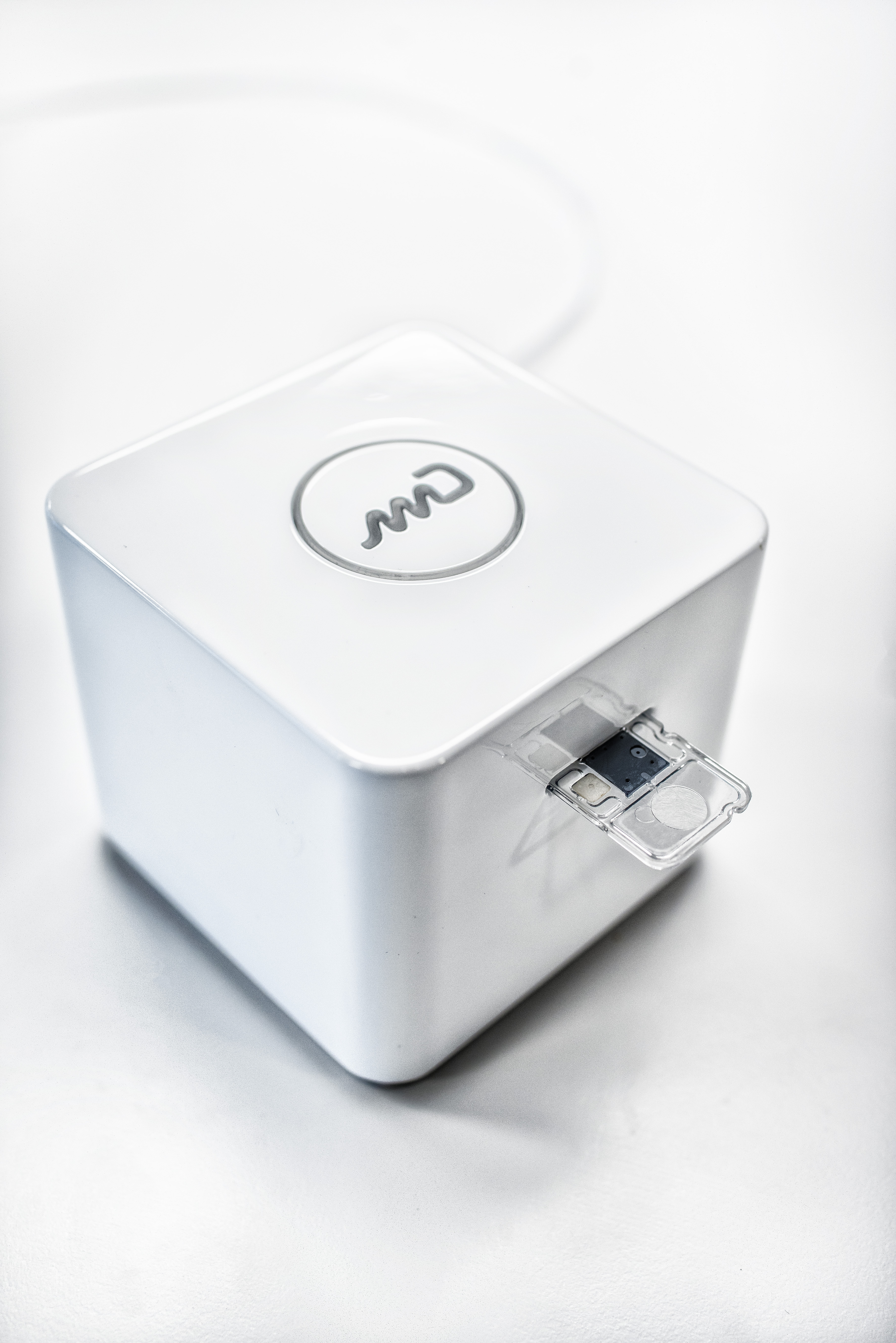Imec awarded grant from NASA

Image:miDiagnostics’ research prototype device that can perform a complete blood cell count from only drops of blood. This prototype device is for research use only, not for in diagnostic procedures.
imec, a leading research and innovation hub in nano-electronics and digital technologies has announced it has received NASA funding to test a technology for monitoring astronauts’ health status under zero gravity conditions using a first-of-its-kind disposable diagnostic device developed by imec’s spin-off, miDiagnostics. Imec will design test parameters and perform experiments in different gravity scenarios using one of miDiagnostics’ devices that is built around a silicon-based nanofluidic processor that performs a series of blood sample manipulations yielding a cell blood count with fast turnaround time.
“Human exploration into deep space requires the development of medical devices and diagnostics of small mass, volume and power requirements, designed for a more autonomous practice of medicine,” said Susana B.
Zanello, Ph.D., research and development manager at imec’s design center in Kissimmee (Florida) and principal investigator on the project.
Responding to the need for easily deployable medical devices with minimal instrumentation, miDiagnostics is developing a near-patient diagnostic platform, based on a nanofluidic processor embedded in a single-use, low-cost, test card.
Presently, miDiagnostics has developed a research prototype that can perform a complete cell blood count (CBC) from only drops of blood. In other configurations, the same platform will enable accurate and instantaneous point-of-need diagnostics for a suite of cellular, biochemical and molecular tests. “The device is currently in development for standard earth-based conditions, said Peter Peumans, VP life sciences technologies at imec and CTO of miDiagnostics. “But it should also function in gravity-independent environments, as it relies solely on capillary forces.”
Imec will test the device in parabolic flight, which offers different gravitational loads. This specific environment will allow testing of the functionality of the nanofluidic system and its independence from gravity—from sample capture at the inlet port to its migration within the nanofluidic channel network. “While the macroscopic part of this process is relatively straightforward to assess, imec intends to look inside the device to validate the correct sequence of events and the correct functioning of the subcomponents, as well as its robustness,” explained Veerle Reumers, Ph.D, research and development manager at imec’s design center in Kissimmee (Florida) and co-investigator on the study.
“This technology demonstration, facilitated by the Flight Opportunities program, aims to address NASA’s need for technologies that support human exploration and further commercial activity both in Earth orbit and in cislunar space and beyond,” stated Dr Zanello.
“We are very excited that our technology has been selected by imec to demonstrate its operation during parabolic flights, and is a good example of how imec and miDiagnostics are working together to bring diagnostics to the most remote places”, said Nicolas Vergauwe, CEO of miDiagnostics.

































